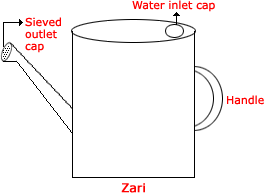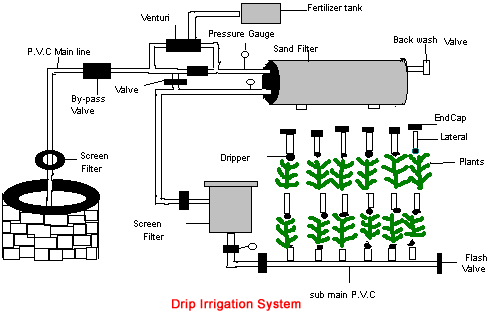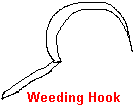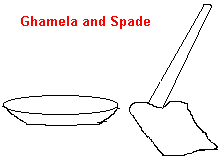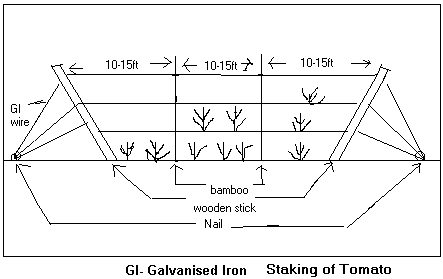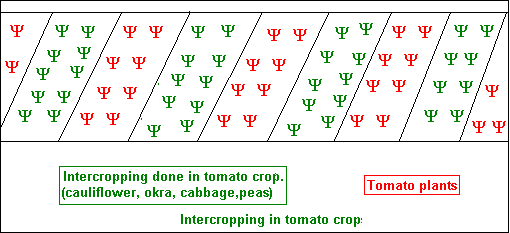Tomato Cultivation News
Tomato : Tomato Prices will Touch Rs. 50/kg for Few DaysVegetable prices are high as heatwave conditions scorched most parts of the country and traders expect prices to remain volatile, likely affecting consumer inflation this month. Read More | ||||||||||||||||||||||||||||||||||||||||||||||||||||||||||||||||||||||||||||||||||||||||||||||||||||||||||||||
Tomato: Improved Practices for Tomato CultivationTomato is the most widely grown vegetable crop in India. Now we see some important information about tomato cultivation such as Soil solarisation, Nursery, Drip system details, Trailing. Read More | ||||||||||||||||||||||||||||||||||||||||||||||||||||||||||||||||||||||||||||||||||||||||||||||||||||||||||||||
Tomato: Role of Pests Control in Tomato Cultivation.Crop rotations, which assist in breaking life cycles of insects and pests, is a traditional means of pest control. Control of tomato pests require careful monitoring and integration of cultural practices and biological control. Read More | ||||||||||||||||||||||||||||||||||||||||||||||||||||||||||||||||||||||||||||||||||||||||||||||||||||||||||||||
Tomato Price | Tomato Market NewsTomato Price : Tomato at Rs.60 per kgTomato prices started increasing in north region. Prices in the retail market touched Rs 60 per kg in several parts of the city as a rise of Rs 16 was recorded in the best quality tomato in the wholesale market since mid-October. Read More | ||||||||||||||||||||||||||||||||||||||||||||||||||||||||||||||||||||||||||||||||||||||||||||||||||||||||||||||
Tomato Cultivation Guide | ||||||||||||||||||||||||||||||||||||||||||||||||||||||||||||||||||||||||||||||||||||||||||||||||||||||||||||||
Climatic RequirementsTomato is a warm season crop, it requires warm and cool climate. The plants cannot withstand frost and high humidity. Also light intensity affects pigmentation, fruit colour, fruit set. The plant is highly affected by adverse climatic conditions. It requires different climatic range for seed germination, seedling growth, flower and fruit set, and fruit quality. Temperature below 100C and above 380C adversely affects plant tissues thereby slow down physiological activities. It thrives well in temperature 100C to 300C with optimum range of temperature is 21-240C. The mean temperature below 160C and above 270C are not desirable. The plant doesn’t withstand frost, it requires low to medium rainfall, and does well under average monthly temperature of 21 to 230C. Avoid water stress and long dry period as it causes cracking of fruits. Bright sunshine at the time of fruit set helps to develop dark red coloured fruits. Temperature Requirement
Soil RequirementTomatoes do very well on most mineral soils, but they
prefer deep, well drained sandy loams. Upper layer of soil should be
porous with little sand and good clay in the subsoil. Soil depth 15 to
20cm proves to be good for healthy crop. Deep tillage can allow for
adequate root penetration in heavy clay type soils, which allows for
production in these soil types. Choice of seedsAfter seed production, diseased, broken seeds are discarded. The seeds for sowing should be free from inert matter. Early germinating, bold, uniform in shape and size, seeds are selected for sowing. Hybrid seeds from F1 generation are advantageous for sowing as it gives early and high yield uniform fruity, resistant to adverse environmental conditions. a) Seed and sowingTomato is generally cultivated by transplanting seedlings on ridges and furrows. At the time of transplanting seedlings are harder by exposing to open weather or by withholding irrigation. A seed rate of 400 to 500g/ha is required. Seeds are treated with Thiram @ 3g/kg of seed to protect from seed born diseases. Seed treatment with B. naphthoxyacetic acid (BNOA) at 25 and 50 ppm, gibberllic acid (GA3) at 5-20 ppm and chlorophenoxy acetic at 10 and 20 ppm was found to improve the growth and yield of tomato. Seeds are sown in June July for autumn winter crop and for spring summer crop seeds are sown in November. In the hills seed is sown in March April. The spacing recommended for the autumn winter crop is 75 x 60cm and for spring summer crop 75 x 45cm. Nursery Preparation and Care
The ideal seedbed should be 60cm wide, 5-6cm long and 20-25cm high. Clods and stubbles should be removed from the seedbed. Add sieved FYM and fine sand on the seedbed. Bring them to fine tilth. Drench the bed with Fytolon/Dithane M-45 @ 2-2.5 g/lit of water. Draw the lines 10 to 15cm apart throughout the length of the seedbed. Sow the seeds thinly spaced in lines, press gently, cover with fine sand and then cover the bed with straw. Irrigate with rose can. Irrigate the seedbed twice a day till the seeds germinate. Remove the straw after the seeds germinate. Apply a little Thimet at 4-5 leaf stage. Spray the seedlings with Metasystox/Thiodan @ 2-2.5 ml/lit water and Dithane M-45 @ 2-2.5 g/lit water. FertilizersAs the fruit production and quality depends upon nutrient availability and fertilizer application so balance fertilizer are applied as per requirement. The nitrogen in adequate quantity increases fruit quality, fruit size, color and taste. It also helps in increasing desirable acidic flavor. Adequate amount of potassium is also required for growth, yield and quality. Mono Ammonium Phosphate (MAP) may be used as a starter fertilizer to supply adequate phosphorus during germination and seedling stages. Calcium availability is also very important to control soil pH and nutrient availability. Sandy soils will require a higher rate of fertilizer, and more frequent applications of these fertilizers due to increased leaching of essential nutrients. The seedlings are sprayed with starter solution of micronutrient. Before planting farm yard manure @ 50 ton per hectares should be incorporated. Normally tomato crop requires 120kg Nitrogen (N), 50kg Phosphorus (P2O5), and 50kg Potash (K2O). Nitrogen should be given in split doses. Half nitrogen and full P2O5 is given at the time of transplanting and remaining nitrogen is given after 30 days and 60 days of transplanting. Soil and tissue analyses should be taken throughout the growing and production season to insure essential nutrients are in their proper amounts and ratios. Tissue analysis of a nutritionally sufficient plant will show the following nutrient status:
In the present situation it has been realized that the use of inorganic fertilizers should be integrated with renewable and environmental friendly organic fertilizers, crop residues and green manures. Irrigation
Tomatoes have been observed to withdraw water from depths up to 13 feet in a well structured soil. Tomato plants require adequate moisture throughout their growth period. First irrigation is required soon after seedlings are transplanted. Frequent water is necessary in root zone when plants are small. In summer irrigation at intervals of 3-4 days and 10-15 days water is necessary to maintain wet soil. Erratic moisture conditions can cause radial and concentric cracking on fruit. Implements for Interculturing Operations
Generally interculturing operations like hand hoeing, weeding, mulching, staking is followed in tomato. Implements like hand-hoe, khurpi, land leveller etc. are used. Inter Culture OperationsPre-emergence applications of herbicides like metribuzin at 0.35 kg/ha, fluchloralin 1.25 kg/ha has been found effective to increase the tomato yield significantly in comparison to traditional method of hand weeding. Also plastic mulching (black or transparent) can be used to control the weeds. Weeds can be controlled successfully by mulching plus use of herbicides (pendimethalin @ 0.75kg ai/ha or oxyflorophen @ 0.12kg ai/ha). Spraying of PCPA at 50 ppm, IAA at 50 ppm or borax 1% gave the fruit set in summer season. PCPA spray at flowering stage was observed to create favorable conditions for fruit set in low as well as high temperatures. Staking of Tomato
Due to staking there is better growth of tomato plant and branches, increased fruit bearing, and improved quality of fruits. Cultural operations like fruit picking, spraying, weeding, fertilisers application and earthing up etc. for staking can be done by two methods. In first type, at each plant sticks of 1.5-2meter length and 2.5cm thickness are placed and plant of tomato is staked as it is growing. In second type, a network of wire and bamboo is form and with the help of sutali (small rope) branches of plant is spread. Secondary branches should be cut upto 30 cm and from 30 cm height keeping two main branches plant should be allow to spread on this network. Intercropping
Tomato is well fitted in different cropping systems of cereals, grains, pulses and oilseeds. Cropping systems rice-tomato, rice-maize, okra-potato-tomato, tomato-onion are popular in various parts of India. Cauliflower- okra –sunflower –cabbage –tomato –maize -tomato-watermelon and paddy-peas-tomato have been proved economical systems. Palak or radish can be grown as inter-crop in tomato successfully. Pest ManagementFollowing are the few major pest of tomato: Control measures of tomato pest is given as below: -
Control measure Spraying of cypernethrin at the rate of 3-4 ml or for Phosphamidon (85 SL) 5 ml per 10 litre of water at the interval of 8-10 days. Control measure Spraying of monocrotophos (36 SL) 5 ml/ 10 litre of water at the interval of 8-10 days. Trichograma and campoletic cloride as a predator and heliocil as biological control. It can be control by spraying dimethoate (30 E.C.) 10 ml/10 litre of water. The controls vary from state to state and region to region. The local agricultural chemical manual will list controls and rates for each pest. Fungicides / Incidence of diseasesFollowing are the diseases of tomato, which control by following methods of fungicide application: -
(Caution:-This is a general information and you are requested to read the product information carefully before use and you should consult a expert if you have any doubt or questions.) Harvesting Time and MethodThe harvest of tomatoes is dependent on the closeness to the market. Stages of tomato harvesting: -
Harvesting every day may be desirable during the peak of the season. Remove all diseased, misshapen, and otherwise cull tomatoes from the vines as soon as they are discovered. Remove discarded tomatoes from the field to avoid the spread and buildup of diseases and insect pests. Means of TransportationTomatoes are highly perishable in nature hence quick means of transportation is necessary. Tomatoes are transported by road through tractors, trucks and also by rail and air to distant markets. Village produce is transported to the near by towns and city market only by road. The cargo services are also available for transportation. Processed tomatoes are having high export potential hence transported to different countries like USA, Saudi Arabia and Japan etc. |
||||||||||||||||||||||||||||||||||||||||||||||||||||||||||||||||||||||||||||||||||||||||||||||||||||||||||||||
